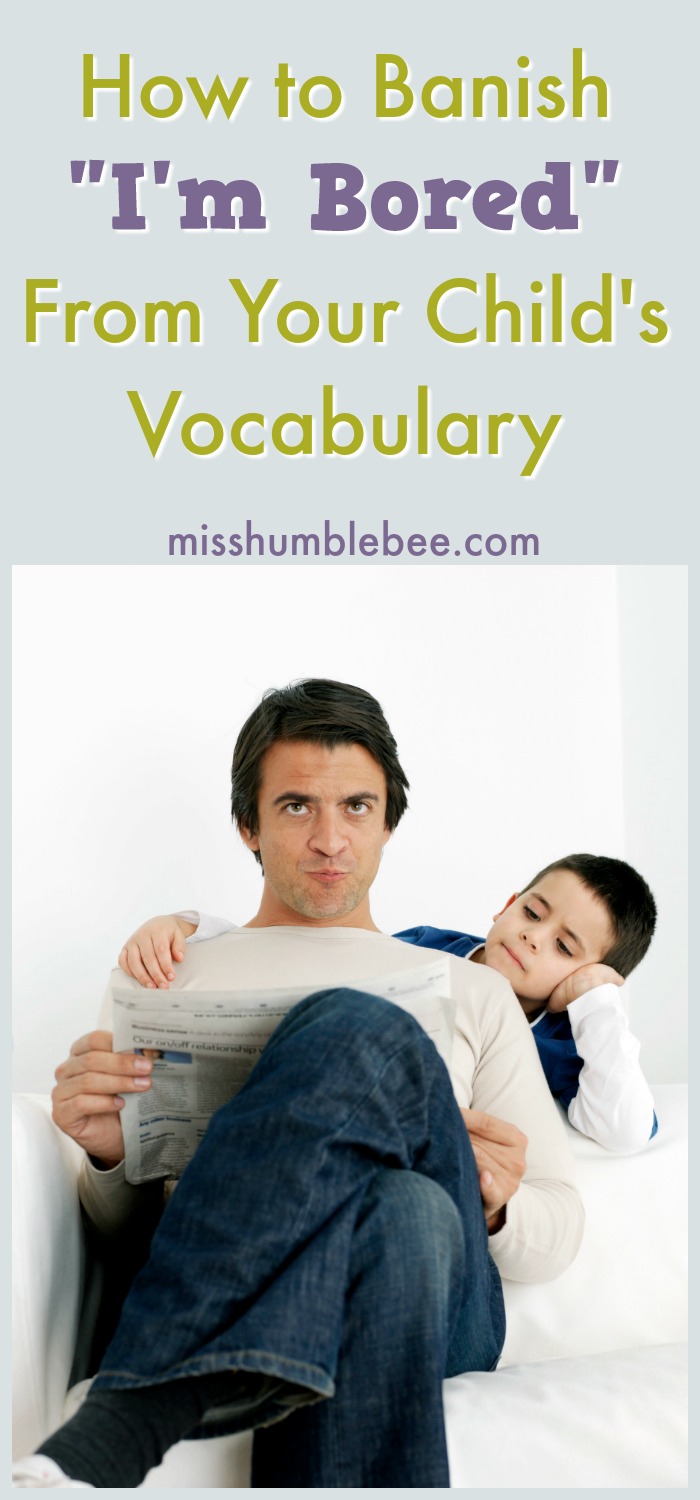If you’ve been a parent for more than a handful of years, you’ve heard some version of the phrase “I’m bored” during your parenting journey.
Maybe it was “This is boring” or “There’s nothing to do” or “There’s nothing fun in this house!”

How to Banish “I’m Bored” From Your Child’s Vocabulary
Whatever the phrase, upon hearing it, most parents look around at the piles of toys, the stacks of books, the crates of craft supplies that clog up their home, and wonder how on earth their kids could possibly be bored. Then many of those same parents make a mistake: They try to help their child stop being bored.
It sounds like a good idea. No one wants a child sulking around and if you can get them interested in something, they’ll become engaged and might even learn a thing or two. How could suggesting ideas to stop your child from being bored be a bad thing? According to Michael Ungar in Psychology Today:
Simply amusing our children endlessly may actually do them more harm than good. They will never learn how to act autonomously, accept responsibility for their own well-being, seek out challenges that interest them, or learn how to self-motivate.
In other words, when we don’t allow our kids to be bored, we deprive them of the opportunity to learn important life skills.
Unfortunately, if you’ve gotten used to being your child’s cruise director, planning each part of their day and making sure their life is as exciting as possible, both you and your child may find it difficult to transition to letting him solve his own boredom problem. It’s not impossible however.
Below are several ideas to help you stop stepping in every time your kids run to you to tell you they’re bored.
1. Create a Boredom Jar
While your child will ideally transition to a point of full independence in thinking up things to do, at first she may need a little help.
Sit down together and brainstorm a list of activities your child likes to do or has wanted to try. These should be things that can be done at home, so don’t include things like those trapeze lessons she’s been begging for or going swimming at your favorite lake 30 minutes away.
Once you have your list written down, cut out each individual activity and stick the pieces of paper in a jar. Each time your child tells you she’s bored, simply point to the jar where she can pull out a slip of paper with a boredom buster on it.
2. Modify the Boredom Jar
After some practice with the Boredom Jar, your child should start to learn to come up with his own ideas when he’s bored, but chances are he’ll still want you to come up with ideas for him at times.
That’s when it’s time to make a change to the Boredom Jar. First, remove all the papers from it. Then write down a list of chores your child can perform. Cut them out individually and place them in the jar.
Now if your child tells you he’s bored, offer him a choice: He can come up with something to do on his own or you can come up with something for him to do, but he might not like it. If he chooses the latter, have him pull a paper from the Boredom Jar and do whatever chore is listed.
It will not take long for him to learn to come up with creative solutions without your help.
Provide the Right Materials
Chances are, your child has more toys than you know what to do with. Chances are also good that she rarely plays with most of them. Most toys are fun for a short time, but quickly lose their appeal because there is a right way to play with them. Think of all the battery-operated items your child has that only work a certain way.
If you want your child to learn how to creatively problem solve, you’ll want to make sure she has open-ended toys available. These are toys that don’t have one particular function and can be used in a variety of ways, such as blocks or small figurines.
These open-ended materials don’t even have to be toys. One of the best things you can give your child is a big, empty cardboard box. You’ll be amazed at what she can turn that box into, and the best part is, it’s free!
Be Willing to Endure the Mess Sometimes
Sometimes the reason we’re so quick to jump in and help our bored kids decide what to do is so that we can have a measure of control over what they choose. Let’s face it, if you just cleaned the house, the last thing you want your four-year-old to do is finger paint.
However, if you want to foster creativity and independence in your child, sometimes you have to be willing to endure the mess. Of course there will be moments when the time isn’t right for your child to go splash in a mud puddle or pull out the glitter play dough, but if your only excuse is that you don’t want to be bothered, I strongly urge you to reconsider.
Besides, messy play also offers the opportunity for your child to learn another important life skill: How to clean up after himself.
Employ these methods and before you know it, the phrase “I’m bored” will be heard less frequently around your house and instead will be replaced with the sounds of creative kids having a good time.










